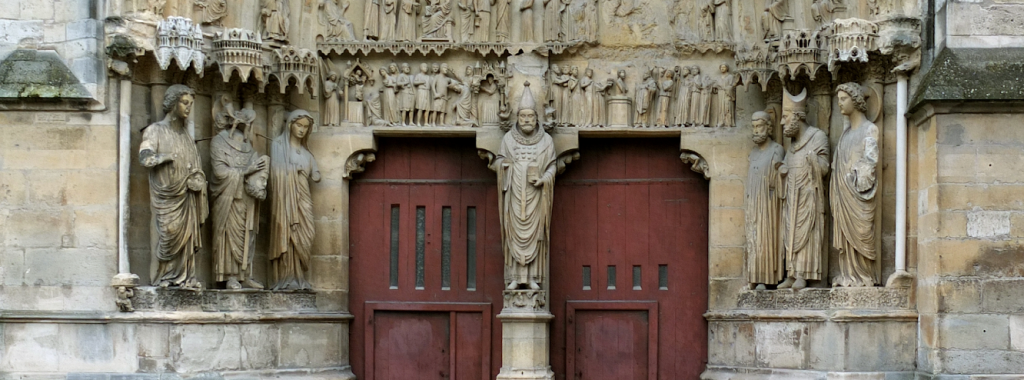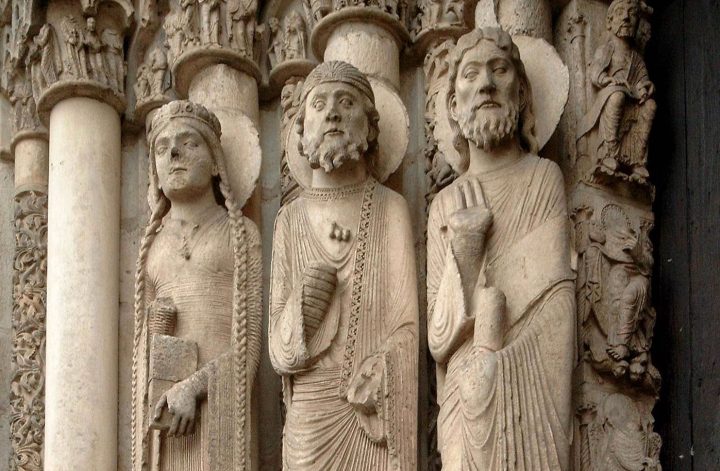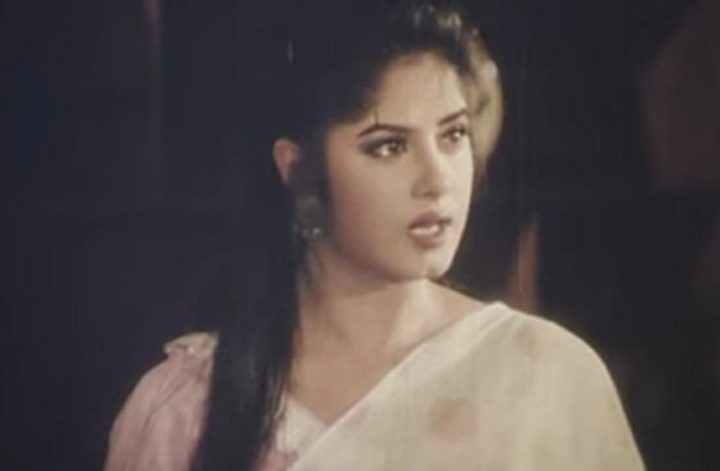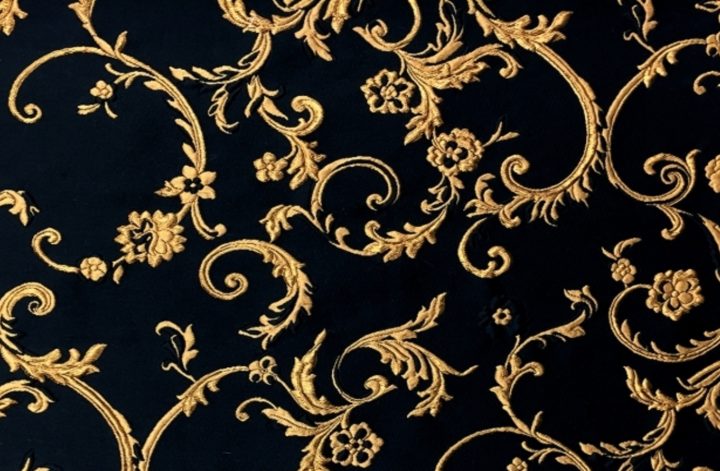By Mehreen Kabir
Date Written: 06/03/2023
Last updated: 14/04/2023
Romanesque art
1000 – 12th century C.E
One of the main art styles from the second half of the 11th century throughout the 12th century was Romanesque art. Romanesque art was, as the name suggests, heavily influenced by Ancient Roman art forms, especially when it came to sculptures.

Top: The bottom-left of the tympanum of Vézelay Abbey, C.E 1120-1150 – Image by Wikimedia Commons
Bottom: Sarcophagus with scenes of Phaedra and Hippolytus, C.E. 290 – Image via Wikimedia Commons
From the pictures above, we can see the similarities between the two sculptures even though they were made almost a millennia apart. However, the tympanum of Vézelay Abbey still retains some artistic qualities from previous medieval art movements; one example would be the lack of realistic folds in the garments, creating a slight rigidity in the way it flows. The subjects in general still retain a bit of a flat look, just like in the medieval art movements prior.
Alongside inspiration from Ancient Roman Sculptures, sculptures also took inspiration from early Insular and Anglo-saxon art.
A close-up of the columns of Moissac Abbey, C.E. 506 – Image by Benh LIEU SONG – Own work, CC BY-SA 4.0 The original image was cropped by the author of the article
The top of the columns above is a nod to the insular designs of northern Europe. Circular designs were very popular in Insular art, and it seems to have carried on to Romanesque architecture.
Left: Relief designs of animals intertwined with stems on a column of Cahors Cathedral – Image via Wikimedia Commons
Right: A close-up of an animal illustration in Lindisfarne Gospels – Image via Wikimedia Commons
Another point of influence from Insular Art is the inclusion of animals entwined in decorative spirals in columns and other sculptural work.
On the other hand, illuminated manuscripts remained largely the same, taking inspiration from Byzantine traditions.
Pages of St. Albans Psalter, C.E 1120-1150
Left image via Wikimedia Commons;
Right image via Wikimedia Commons
However, the designs, although using the same techniques as older manuscripts, were much more lavish and decorative. Gold elements and bold colours were present on every single page. One other thing to note was that there was a higher emphasis placed on background scenery. Most older manuscripts either had a rather plain background scenery, or an abstract one.
Romanesque art led to the Gothic Art movement which began in the 12th century. Wesuccessfully brought back Roman influence, which can be clearly seen in the Gothic era.
Gothic Art
Mid 12th – 16th c C.E
The 12th century brought about many changes with it, many of which were reflected in art forms of the period. There was a growth of Humanism which humanized god and the universe, contrary to previous traditions that saw god as a spiritual being. This led to the creation of more human-like statues and portraits.
A rise in the translation of texts originally written in Arabic and Greek led to a growing demand for acquiring knowledge. Schools were opening across Europe, serving as a breeding ground for intellectual development. All of led to an inevitable change in culture and society.1
The Rucellai Madonna by Duccio di Buoninsegna, C.E 1285 – Image via WIkimedia Commons
Here, we can see a clear difference in style compared to the flat medieval paintings of the past. There is a lot of emphasis on shading and realism, similar to the Italian Renaissance. At the same time, the overall setting of the painting is still reminiscent of medieval styles, with a lack of proper perspective throughout the painting.
Statues of this time period followed the path of the Romanesque era, slowly taking more and more influences from the Classical era.
Death and Ascension of St. Francis by Giotto, C.E 1300 – Image via Wikimedia Commons
Although this could be considered a Medieval painting, it bears a much clearer resemblance to renaissance paintings. In fact, Giotto, the creator of this piece, is considered the first great master of the renaissance art movement. He tried to shift away from stylized medieval art styles as no other before him. Other notable Renaissance artists such as Masaccio and Michelangelo are thought to be his successors.2

Left: The sculptures on the Royal Portal of Chartres Cathedral, C.E 1145-55 – Image by Cancre – Own work, CC BY-SA 2.5
Right: A cropped photo of Virgin (theotokos) and Child between Saints Theodore and George, C.E. 6th c – Image via Wikimedia Commons
Although the head looks much like Classical era busts, the body has a more stiff appearance similar to medieval illustrations as shown in the left. One thing to note about sculptures in this era is the heavy use of stylized folds in clothes, as seen in the rows of straight, neat folds that almost look like pleats.

Left: Sculptures at the Reims Cathedral, C.E 1210-1505 – Image by DIMSFIKAS at Greek Wikipedia – Own work, CC BY-SA 3.0 The original photo was cropped by the author of the article
Right: The folds of the cloth in Augustus of Prima Porta, B.C.E 20 – Image via Wikimedia Commons
The sculptures in the Reims cathedral have a clear Classical influences in its relaxed poses, a contrast to the stiff poses of the sculptures shown previously. There is still a heavy use of folds in the clothes of sculptures, however, they are made to be much more realistic now and resemble Classical statues (as depicted on the left) rather than the stylized and organized folds of the medieval era.

Portal of the north transept of the Reims Cathedral, C.E 1210-1505 – Image by Palauenc05 – Own work, CC BY-SA 4.0
On the other hand, the statues on another part of the same cathedral retain more medieval influences, especially the statue in the middle with its straight pose and organized folds.
The manuscripts of this time were very unique to anything of the past as well as anything that followed, mixing smooth shading techniques and new art methods with medieval features of the past.
The Book of Hours Jeanne d’Evreux, C.E 1324-1328 – Image by Wikimedia Commons
This manuscript bears almost no resemblance to medieval manuscripts of the past, such as its stiff poses and minimal shading. Although created only in black and white, it is much more dramatic than manuscripts of the past, only comparable to the Utrecht Psalter of the Carolingian era.
A page from Très Riches Heures du Duc du Berr, C.E 1412-1416 – Image via Wikimedia Commons
Très Riches Heures du Duc du Berr is a remarkable product of the late middle ages, with its smooth shading and detailed colourful pages. While the shading is very different from previous eras, the poses still bear resemblance to earlier medieval poses.
A page from Très Riches Heures du Duc du Berr, C.E 1412-1416 – Image via Wikimedia Commons
While the floral elements in the border look very similar to early medieval borders, the change in shading technique has made it look quite different.
The gothic period was the last piece of the puzzle known as the medieval era, serving as a stepping stone for the Renaissance of the 14th and 15th centuries. In the following article, we’ll begin to decode the Renaissance — stay tuned for that!
Bibliography:
- “The Forgotten Renaissance. the Renaissance of the Twelfth Century” History of Yesterday, https://historyofyesterday.com/the-forgotten-renaissance-340f353f43ed.
- “Santa Croce Frescoes of Giotto.” Encyclopædia Britannica, Encyclopædia Britannica, Inc., https://www.britannica.com/biography/Giotto-di-Bondone/Santa-Croce-frescoes.
Cover image: Jamb Figures, Central Porch, West Facade



